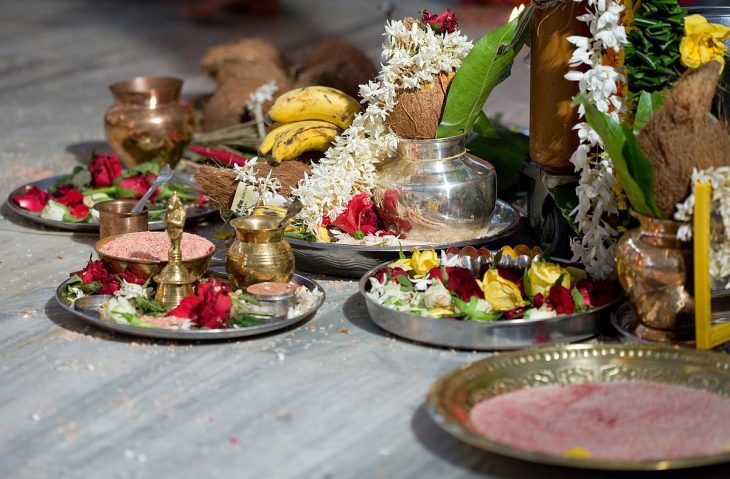
The Essential Items Needed For A Puja & Their Symbolisms
Hinduism is one of the many cultures and religions that are practiced in India. Aarti, Bhajan, and Kirtan are three types of devotional songs that best astrologers and all Hindu devotees are known for using to worship their idols. Devotees make traditional Indian dishes and desserts to offer to the Gods while they worship their idols.
Hinduism refers to puja as a form of devotional worship. Indian gods’ idols are worshiped during pujas with lamps, flowers, songs of adoration, and ceremonies. Certain puja items, also called puja samagri, are needed to complete the rituals carried out during a puja.
Puja is performed to the deity that is the focus of each significant Hindu celebration. According to the best astrologers India, Goddess Durga is honored for nine days during Navaratri. During Ganesh Chaturthi, Lord Ganesha is revered.
Every important holiday must have a traditional Puja, complete with its aartis, bhajans, and several Puja samagri items.
Before any festival, gather the following essential puja items in your house, including fragrance and silver puja items:
Puja Thali:
It is one of the most crucial components of a Puja. It is a plate of metal, usually brass, silver, or copper. This dish includes Sindoor, Haldi, rice, a lamp, and flower petals. During most aartis, the thali must typically be held towards the idols in a clockwise circular manner. As a display of love and respect, devotees sprinkle rice grains and flower petals on the idols during this veneration.
Thalis come in a wide variety of styles today. You can visit the best astrology app for a complete guide about which Pooja thali you should buy for your worshiped god. Purchasing a puja thali in silver or brass for significant festivals like Diwali is optimal, but a steel thali will also work.
Incense Sticks:
When ignited, incense sticks, also known as agarbattis, emit a pleasant and calming fragrance that fosters a pious and holy atmosphere conducive to prayer. Incense sticks are available in various scents and can be used at celebratory times. These calm the area because they are long-lasting and frequently last longer than a diya’s light.
Home Temple:
According to Vastu Shastra and insta astro, keeping the shrine in the northeastern or eastern corner of the home is recommended because it is thought that doing so will bring luck to the neighborhood.
Kapur/Camphor:
As it stimulates thought, some people think of Kapur as a divinity. Only Kapur is responsible for finishing the pooja thali. Kapur is used to welcoming new things into the house, driving out negative energy, and welcoming the deity and good things in life.
Kalash:
The Purohit, responsible for carrying Kalasa inside the sanctuary, also sprinkles water on the devotee to ward off evil spirits and doshas. The rituals are also conducted with kalasha at the Puja Mantap. The ragi Kalasha is regarded as a sacred God in arid Hindu traditions.
Dry Fruits:
You need these to make prasad for the deity, and they are then distributed among the devotees at the end of the ceremony and puja. Abhishekam was created with the help of dry vegetables and honey, and people prefer to eat dehydrated vegetables while fasting.
Honey:
Puja is incomplete without pure and natural honey that is regarded as delightful and holy. It would help if you offered it to all the gods during Abhishekam. When Abhishekam is done with honey, it eliminates everyone’s negative thoughts and demeanor.
